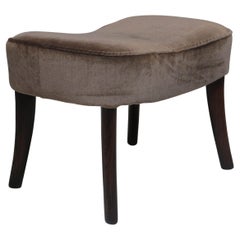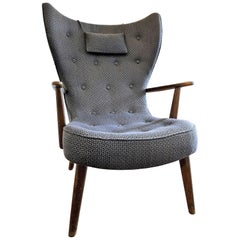Ib Madsen and Acton Schubell On Sale
Mid-20th Century Danish Scandinavian Modern Footstools
Mohair, Oak
Recent Sales
Vintage 1950s Danish Mid-Century Modern Lounge Chairs
Fabric, Teak
Vintage 1960s Danish Scandinavian Modern Lounge Chairs
Fabric, Teak
Vintage 1950s Danish Mid-Century Modern Lounge Chairs
Wool, Beech
Vintage 1960s Danish Scandinavian Modern Benches
Metal
Vintage 1970s American Mid-Century Modern Lounge Chairs
Metal
Vintage 1950s Danish Lounge Chairs
Fabric, Beech
Vintage 1950s Norwegian Scandinavian Modern Lounge Chairs
Leather, Beech
Vintage 1950s Danish Scandinavian Modern Lounge Chairs
Lambskin, Beech
Vintage 1950s Danish Mid-Century Modern Wingback Chairs
Fabric
People Also Browsed
2010s Chinese Modern Architectural Elements
Other
21st Century and Contemporary Italian Mid-Century Modern Wall Lights and...
Brass
2010s American Floor Lamps
Iron
21st Century and Contemporary Belgian Modern Patio and Garden Furniture
Limestone
21st Century and Contemporary Italian Chandeliers and Pendants
Brass
21st Century and Contemporary Vietnamese Empire Center Tables
Wood
Antique Late 18th Century Swedish Scandinavian Modern Cabinets
Pine
Mid-20th Century Danish Mid-Century Modern Sofa Tables
Oak
Early 20th Century Finnish Art Deco Chandeliers and Pendants
Brass
Mid-20th Century Italian Art Deco Wall Mirrors
Mirror, Wood
Mid-20th Century Danish Art Deco Dining Room Tables
Oak
Vintage 1960s Danish Sideboards
Oak
2010s American Organic Modern Flush Mount
Brass
Early 20th Century Swedish Scandinavian Modern Stools
Fabric, Wood, Burl
Vintage 1950s French Mid-Century Modern Dining Room Chairs
Rush, Wood
Mid-20th Century Swedish Mid-Century Modern Coffee and Cocktail Tables
Elm
Ib Madsen and Acton Schubell for sale on 1stDibs
The history of Ib Madsen and Acton Schubell originates with Henry Hans Schubell and Arnold Madsen, a powerhouse duo in Danish furniture design throughout the mid-20th century. The pair collaborated with Dutch company Bovenkamp on a range of furnishings and created memorable lounge chairs, stools and other seating throughout the 1940s, 1950s and early 1960s — such as the iconic Clam chair — that represent the finest of Scandinavian modern design.
Born in 1906, Schubell was an apprentice cabinetmaker turned foreman by his early 20s. As a supervisor for cabinetmakers Winter and Winding, Schubell oversaw furniture production in their workshop until the mid-1940s.
In 1944, a skilled upholster by the name of Arnold Madsen requested assistance from a cabinetmaker to make a prototype lounge chair based on a plaster model he’d made. Accepting the challenge, Schubell impressed Madsen to the point that he suggested they enter into a partnership. The Clam chair was their first collaboration as Madsen & Schubell.
According to Aaron FitzGerald, of Dagmar gallery, Madsen’s Clam chair is “one of the most sought-after and simultaneously misattributed and copied chair designs of the twentieth century.” In the past, it was ascribed to the Norwegian retailer Martin Olsen and then the Danish architect Philip Arctander. It was only through some dogged research by a team of international design historians and collectors that it was finally correctly associated with Madsen.
In the backyard of a modest home in Copenhagen, Schubell built wooden frames which Madsen then upholstered. They sold their finished products to dealers under their joint name, earning enough money to move production to a factory outside the city. Some models were under license by Norwegian company Vik & Blindheim while others were manufactured by Bovenkamp in the Netherlands. The pair’s partnership ended in 1963 in order for the designers to establish separate companies. Madsen opened a new upholstery firm with his son, Ib Madsen, under the name Madsen og Schubell, and Schubell continued to build frames for Madsen as Schubell & Son.
Vintage Madsen & Schubell chairs offer sturdy build quality and the kind of superior upholstery that is typical among mid-century Scandinavian furniture. Working with a range of woods including teak, rosewood and birch, Madsen & Schubell accented natural wood grains with soft lambswool and sheepskin for a variety of comfortable seating.
On 1stDibs, find vintage Ib Madsen and Acton Schubell lounge chairs, armchairs and other seating.
Finding the Right Lounge-chairs for You
While this specific seating is known to all for its comfort and familiar form, the history of how your favorite antique or vintage lounge chair came to be is slightly more ambiguous.
Although there are rare armchairs dating back as far as the 17th century, some believe that the origins of the first official “lounge chair” are tied to Hungarian modernist designer-architect Marcel Breuer. Sure, Breuer wasn’t exactly reinventing the wheel when he introduced the Wassily lounge chair in 1925, but his seat was indeed revolutionary for its integration of bent tubular steel.
Officially, a lounge chair is simply defined as a “comfortable armchair,” which allows for the shape and material of the furnishings to be extremely diverse. Whether or not chaise longues make the cut for this category is a matter of frequent debate.
The Eames lounge chair, on the other hand, has come to define somewhat of a universal perception of what a lounge chair can be. Introduced in 1956, the Eames lounger (and its partner in cozy, the ottoman) quickly became staples in television shows, prestigious office buildings and sumptuous living rooms. Venerable American mid-century modern designers Charles and Ray Eames intended for it to be the peak of luxury, which they knew meant taking furniture to the next level of style and comfort. Their chair inspired many modern interpretations of the lounge — as well as numerous copies.
On 1stDibs, find a broad range of unique lounge chairs that includes everything from antique Victorian-era seating to vintage mid-century modern lounge chairs by craftspersons such as Hans Wegner to contemporary choices from today’s innovative designers.


